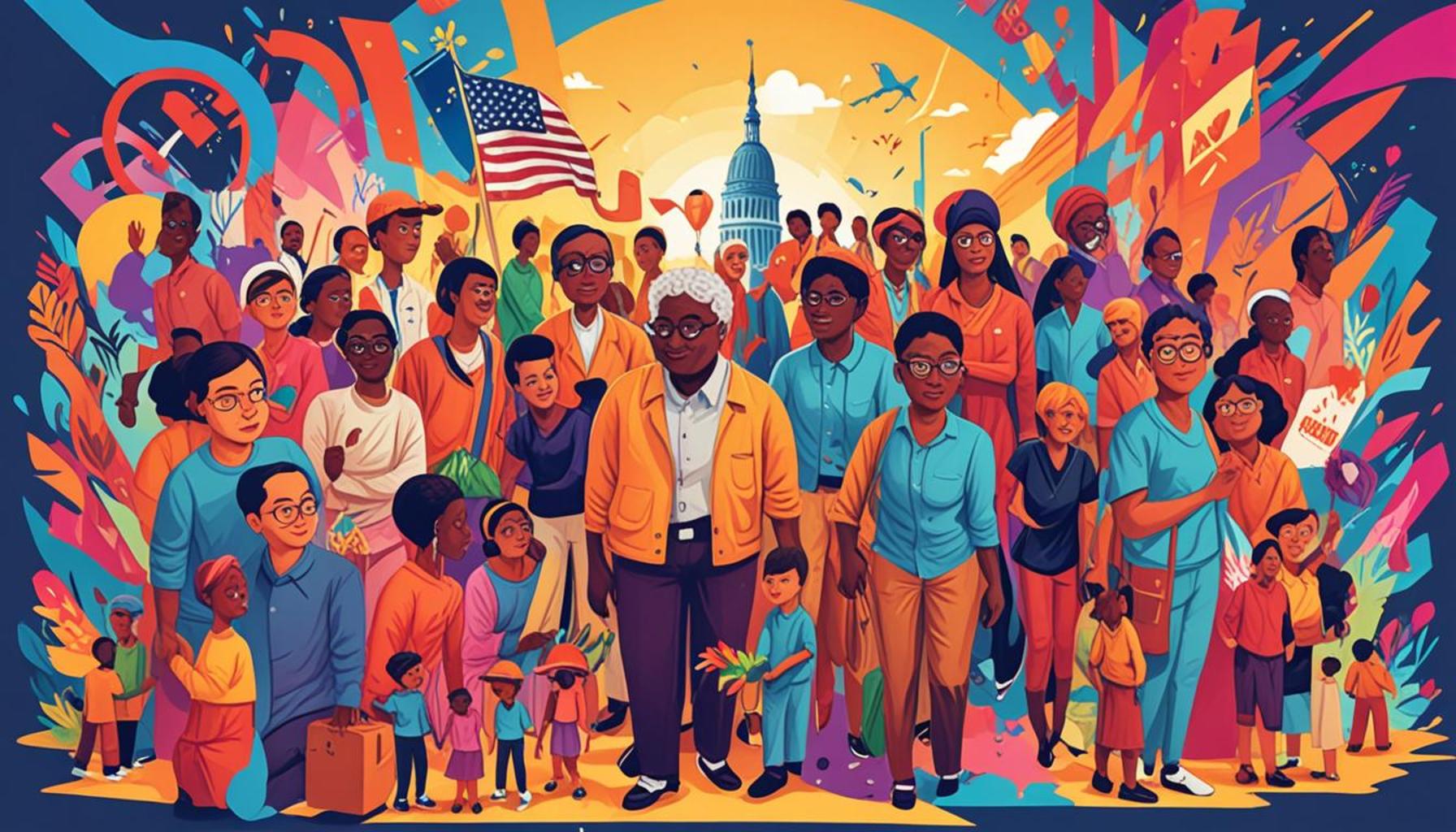The Role of Government Assistance in the Social Inclusion of Marginalized Groups

Understanding Government Assistance and Social Inclusion
In a diverse society, social inclusion is vital for harmony and progress. Yet, marginalized groups often face significant barriers that hinder their ability to engage fully within their communities. These obstacles can manifest in multiple forms, ranging from financial constraints to systemic discrimination. Recognizing this, government assistance plays a crucial role in dismantling these barriers and facilitating greater access to resources and opportunities.
Key areas where government support is impactful include:
- Education: Programs aimed at underprivileged youth, such as funding for after-school initiatives and scholarships, can bridge the achievement gap. For instance, the Title I program allocates federal funds to schools serving low-income students, helping improve educational outcomes and foster a sense of belonging among students.
- Healthcare: Access to affordable health services ensures that even the most vulnerable receive necessary medical care. Medicaid expansion, as enacted in several states under the Affordable Care Act, has allowed millions of low-income individuals to gain health coverage, which is essential for early diagnosis and treatment of medical conditions.
- Employment: Initiatives that promote job training create opportunities for marginalized populations. Programs like the Workforce Innovation and Opportunity Act (WIOA) aim to equip individuals with skills that match labor market demands, thereby enhancing their employability and economic mobility.
- Housing: Affordable housing programs help build stable communities. The Low-Income Housing Tax Credit (LIHTC) incentivizes private developers to create affordable rental housing, helping to alleviate the housing crisis faced by low-income families and fostering more inclusive neighborhoods.
Several notable examples exist across the United States, such as the Supplemental Nutrition Assistance Program (SNAP) and Medicaid expansion. These initiatives illustrate how strategic government interventions can foster an inclusive society. By addressing financial hardships and providing access to essential services, the government acts as a facilitator of change, promoting dignity and self-sufficiency among those in need.
Yet, questions remain about the effectiveness and equitable distribution of these resources. For instance, how do states ensure that funding reaches the communities that need it most? Are there sufficient measures in place to prevent systemic discrimination in how assistance is allocated? How can government assistance be optimized to promote long-term social inclusion rather than temporary relief?
These inquiries invite further exploration into the multifaceted role of government assistance in achieving meaningful integration for marginalized groups. As discussions about social justice and equity evolve, understanding these dynamics becomes ever more critical for fostering a truly inclusive society.
CHECK OUT: Click here to explore more
The Power of Government Assistance Programs
Government assistance programs serve as critical lifelines for marginalized groups, shaping their ability to access essential resources and services. These initiatives do not merely provide temporary relief; they are designed to empower individuals and communities, fostering long-term social inclusion. By addressing the unique needs of disadvantaged populations, government programs play a pivotal role in leveling the playing field.
Detailed analyses of specific governmental programs can illuminate their impact on social inclusion. For instance, educational initiatives demonstrate the profound difference funding can make. Programs targeting low-income neighborhoods, such as the Head Start initiative, offer early childhood education and support services, setting the stage for academic success. Such educational interventions have been shown to yield lasting benefits, including increased high school graduation rates and improved future employment opportunities.
When examining healthcare, government assistance is equally transformative. The expansion of government programs like Medicaid has been instrumental in providing health coverage to previously uninsured populations. This expansion not only addresses immediate health needs but also contributes to long-term societal benefits, such as reduced healthcare costs and enhanced workforce participation. Access to preventative care increases individuals’ ability to maintain a healthy lifestyle, thus enhancing their overall quality of life.
Even within the realm of employment, government assistance proves vital. Programs like the Job Corps offer at-risk youth vocational training and education, guiding them towards gainful employment. According to the U.S. Department of Labor, participants in Job Corps are estimated to earn on average over $1,000 more per year compared to their peers. Such initiatives not only pave the way for personal economic advancement but also contribute to the reduction of poverty at the community level.
Furthermore, housing support initiatives cannot be overlooked. The success of the Housing Choice Voucher Program illustrates the importance of affordable housing in social inclusion. By providing families with the financial means to secure stable living conditions, this program helps mitigate the adverse effects of homelessness and housing instability, thereby fostering community integration. Stable housing is a cornerstone of social inclusion; it allows individuals to participate fully in their communities, from securing employment to accessing education and health services.
However, the effectiveness of these programs often hinges on equitable distribution and access. Questions around systemic barriers emerge when examining how marginalized communities receive assistance. Disparities in funding allocation and resource accessibility can exacerbate existing inequalities, raising concerns about whether government efforts truly fulfill their intended purpose. With the ongoing dialogue around social justice, it becomes increasingly crucial to assess the mechanisms of governmental assistance and their effectiveness in creating a more inclusive society for all.
| Category | Advantages |
|---|---|
| Financial Assistance Programs | These programs offer direct financial support to marginalized groups, helping them meet basic needs such as housing, food, and healthcare. |
| Job Training Initiatives | These initiatives provide skill development, which is pivotal in enhancing employability and fostering economic empowerment within communities. |
| Education Support Services | Education services funded by the government aim to bridge the educational gap, ensuring equal access to quality education for marginalized individuals. |
| Health Care Accessibility Programs | Government initiatives to improve health care access ensure that marginalized groups receive necessary medical treatment, directly influencing their quality of life and productivity. |
The role of government assistance is crucial in shaping an inclusive society. Each of these programs not only aims to rectify disparities but also fosters a sense of belonging among marginalized groups, encouraging participation in the socioeconomic landscape. As these individuals receive support, they are better positioned to contribute to their communities, creating a ripple effect of positive change. The interconnection between financial stability, education, job skills, and health cannot be understated—it is essential for building a foundation where everyone has the opportunity to thrive. Exploring further into these assistance roles reveals a pathway toward comprehensive social inclusion, which is imperative for societal progress. Additionally, understanding how these systems work can inspire new policies and support mechanisms that enhance the effectiveness of government programs.
SEE ALSO: Click here to read another article
Addressing Systemic Barriers Through Targeted Assistance
While government assistance programs have demonstrated significant potential in promoting the social inclusion of marginalized groups, the pathway to equity remains obstructed by systemic barriers. To fully harness the impact of these programs, it is crucial to identify and dismantle the challenges that prevent equitable access. Government initiatives must adopt a multifaceted approach, addressing not only the surface-level needs but also the underlying social determinants that hinder meaningful participation in society.
Transportation represents one of the most overlooked factors in the struggle for social inclusion. Lack of reliable transport options hinders marginalized individuals from accessing job opportunities, education, and healthcare. For instance, in urban areas where public transportation may be insufficient or unreliable, many low-income residents find themselves isolated from employment centers. Government programs such as Rides to Wellness, which assist with transportation to medical appointments for low-income individuals, illustrate how targeted assistance can break down barriers and empower communities to seek necessary services.
Another critical avenue where government assistance can play a transformative role is through technology access. In the increasingly digital age, access to the internet is tantamount to access to educational resources and employment opportunities. According to a report by the Pew Research Center, nearly 30% of adults with annual incomes below $30,000 do not have broadband internet at home. Programs aimed at providing subsidized internet service or digital literacy training, such as the Federal Communications Commission’s E-Rate program, serve as essential tools for bridging the digital divide and allowing marginalized individuals to compete on an equal footing.
Cultural barriers also come into play, particularly for immigrant and refugee communities. Programmatic support that embraces cultural sensitivity and inclusivity can enhance engagement and utilization of government resources. For example, targeted outreach and multilingual resources ensure that individuals from diverse backgrounds receive the assistance they require. The Office of Refugee Resettlement plays a pivotal role in this respect, providing legal assistance, mentorship, and job training to help refugees integrate smoothly into American society.
The role of community partnerships within government assistance programs cannot be understated. Collaborations between governmental agencies and local non-profits can enhance the effectiveness of initiatives aimed at marginalized groups. These partnerships can facilitate innovative solutions, such as offering job training programs in community centers or creating mentorship opportunities in collaboration with local businesses. By leveraging existing community networks, the impact of government support can be amplified, fostering a more inclusive environment for those in need.
Nevertheless, continuous evaluation and adjustment of government assistance programs are essential to ensure they meet the evolving needs of marginalized populations. Gathering and analyzing data on program effectiveness can provide insights for improvements and innovation. For example, the Equity in Learning initiative aims to assess and refine educational programs by focusing on success metrics for at-risk youth, fostering an adaptable framework that can swiftly address emerging challenges.
The role of government assistance in the social inclusion of marginalized groups remains a dynamic and critically important conversation. It is through the recognition of systemic barriers and proactive measures that the potential of these programs can be fully realized, paving the way for a more equitable and inclusive society. Each initiative, whether focused on education, healthcare, transportation, technology access, or community collaboration, contributes uniquely to the overarching goal of social inclusion—an effort that requires vigilance, adaptability, and a commitment to empowering every individual.
LEARN MORE: This related article may interest you
Conclusion
In summary, the role of government assistance in fostering the social inclusion of marginalized groups is both critical and multifaceted. From addressing systemic barriers such as limited transportation and inadequate technology access to embracing cultural sensitivities and building strong community partnerships, these programs can significantly enhance opportunities for those who have been historically excluded. The success of initiatives like Rides to Wellness and E-Rate serves as compelling evidence of how targeted support can facilitate pathways to employment, education, and healthcare.
However, effectiveness hinges not only on program availability but also on continuous iteration and responsive design. Regular evaluations of these assistance programs are essential for aligning them with the shifting needs of marginalized populations. Gathering data and feedback from beneficiaries can illuminate areas for improvement, ensuring that such initiatives remain relevant and impactful.
Ultimately, for social inclusion to be a reality rather than a distant goal, a holistic approach is required—one that incorporates diverse stakeholder perspectives and engages communities directly in shaping solutions. By investing in and amplifying these efforts, America can move toward a society where equitable access to opportunities is the norm, not the exception. The journey to fulfilling this vision is ongoing, demanding a steadfast commitment to equity and empowerment for all individuals, regardless of their background.


